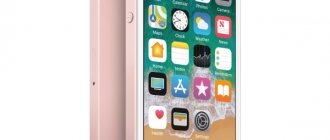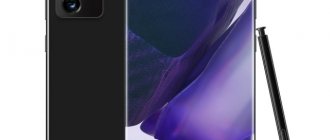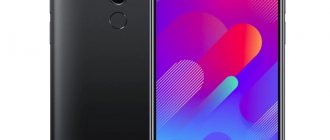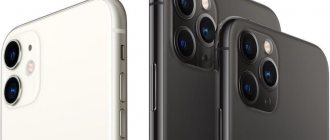How to choose a good TV?
At first glance, to choose the ideal TV model, you need to take into account a dozen parameters. However, it is enough to decide on the key characteristics, and the choice becomes much easier.
What should you pay attention to?
- The diagonal of a TV is the main parameter on which the physical dimensions of the device depend;
- Screen resolution - determines the clarity of the image;
- Screen technology – responsible for the depth and quality of color rendering;
- Supported interfaces - the more there are, the more devices the TV can interact with;
- Smart TV and additional features - diversify your TV use.
Let's look at these points in more detail.
Manufacturer
The manufacturer's reputation must be taken into account when choosing a TV. For example, some companies stand out by equipping their equipment with high-quality speakers, while other organizations promptly release updates for the correct operation of Smart TV. Knowing this information, the user will be able to choose a TV for himself.
The optimal solution would be to purchase a device from Sony, LG or Samsung. These companies occupy leading positions among manufacturers. They produce products with maximum build quality, realistic images, custom design and long service life.
In the budget price segment, equipment from little-known manufacturers is presented: JVC, Akai, Ergo and other companies. Of course, it will be inferior in every way to analogues from more famous brands, but it is still worth the money.
Screen diagonal
This is the distance between the far opposite corners of the TV. The larger it is, the larger the TV. Usually measured in inches. How to choose the TV diagonal? It is often advised to think in advance from what distance the new TV will be watched. This recommendation dates back to the era of cathode ray picture tubes, when sitting too close to the screen was harmful to vision due to powerful electromagnetic fields and the flicker effect. Today it is not relevant - all modern TVs can be safely watched from any distance (of course, without fanaticism). Therefore, choose a diagonal based on the future location of the TV in the interior and your financial capabilities. For example, models with a diagonal up to:
- 24″ are ideal for wall mounting in small kitchens;
- 32″ will be convenient for tabletop use in small bedrooms and living rooms;
- 43″ will fit into standard-sized rooms;
- 50″ for large rooms and halls;
- 55″ and above will help equip a home theater.
Simply put, if your interior and finances allow you, it is better to give preference to TVs with a larger diagonal.
Sound
Sound quality plays a big role for fans of films, TV series or music lovers. Since modern TVs are thin, it is logical that it is unrealistic to insert a powerful sound system into it. It is impossible to say that the sound is bad; if you want a deeper and maximum immersion in what is happening, you will have to buy a home theater. At the same time, there is a luxury segment in 2022, where TV has a very solid sound design. But the price of the models is much higher.
Models with a built-in Dolby Digital decoder and NICAM support are considered to have the best sound performance. There are also models in which the speaker power is at least 20 W. If sound is important to you, but there is no desire to buy an additional home theater or stereo system, then you should choose a TV for your home with a speaker power of 20 W or more.
Screen resolution
Much more important than the diagonal is the resolution of the TV screen. The fact is that any image is built from pixels - small dots that convey one color. The more such dots on the screen, the clearer the image will be. High-definition TVs can be viewed even from close distances, and you will not see the grain in the picture. Screen resolution is related to its diagonal: the larger the diagonal, the higher the resolution should be. Based on resolution, TVs are divided into:
- HD (1366×768) - ideal for small screens, up to 32" diagonal. On large HD screens, the picture will be noticeably grainy up close.
- Full HD (1920×1080) is the most common resolution today. Well suited for large diagonals.
- 4K or UltraHD (3840×2160) - this resolution today provides the highest quality image. Used in TVs with standard and large diagonals (from 40"). However, such models are quite expensive.
To summarize what has been said, if there is a choice between diagonal/resolution, we advise you to buy a TV, albeit with smaller dimensions, but with a higher resolution.
Design
Regarding the appearance of TVs. It cannot be said that there are any special differences. Of course, each manufacturer has features, and there are thinner models. You can also choose a model in white, gray, or silver, but most often manufacturers prefer black. This option is considered the most versatile and will look great in any interior.
The next point is the legs. Some manufacturers include two sets of legs, one curved, the other straighter. If you intend to hang the TV on the wall using a special mount, then the shape of the legs is not important to you.
In most cases, there are no unnecessary elements or buttons on the TV body; everything is done in minimalism. You should buy a TV based only on its design if you don’t care about the image quality and its functionality.
Smart TV
This feature turns an ordinary TV into a multifunctional gadget. Using a high-speed connection, it connects to various Internet services as well as other home devices. Essentially, Smart-TV gives the TV the functions of a computer. This is achieved using several operating systems: Android TV (in Philips and Sony) - built on the same principles as in smartphones. Supports many applications, the interface will not cause inconvenience to users. Different TVs may have different versions of this OS installed. Tizen is a Samsung development and is installed on this company’s TVs. All Samsung TVs have the same Tizen version. Many Russian-language applications are supported. Also intuitive for users. WebOS - installed on LG TVs. The functionality is very similar to Tizen. Any of these operating systems is optimized for working with a TV. The only inconvenience for some users may arise from the unusual interface.
Content:
- 1 Basic selection rules
- 2 Variations of modern matrices 2.1 Features of different types of matrix
- 2.2 Advantages of LCD and LED technology
- 2.3 Super Amoled technology
- 2.4 Which matrix type to choose
- 8.1 Features of Smart TV
There is television in almost every home. Many families purchase 2-3 TVs so that each room has equipment for watching their favorite TV shows. But to truly enjoy watching programs, you need to choose the right device. Moreover, a good model is expensive and no one will buy a new one every day. Let's figure out how to choose a TV for your home so that it meets all your desires and works without failures for more than 5 years.
Digital television standard
Several years ago, Belarus completely abandoned analog television (when the signal was transmitted using radio waves) in favor of digital television (the digital signal is encoded in a binary system). This made it possible to ensure good quality of reception throughout the country. All modern televisions contain a built-in digital receiver. Digital television is transmitted according to several standards:
- DVB-T - digital terrestrial television. This standard has been adopted in Belarus for terrestrial broadcasting.
- DVB-C - digital cable television.
- DVB-S - digital satellite television.
Frequency
When buying a TV, pay special attention to the frequency. This indicator is measured in Hertz, indicating the number of screen updates in 1 second. A parameter of 60 Hz means that in 1 second the image is updated 60 times.
Experts note that a person cannot detect a refresh rate above 60 Hz. However, to view 3D content at 60 fps, when you need to alternately display frames for both eyes separately, you need a response time of approximately 120 Hz.
On the shelves of electronics supermarkets there are models with exorbitant performance: from 240 to 500 Hz. This is a marketing ploy that adds unnecessary pathos to the TV. You should not fall for such an advertising ploy.
Now you know how to choose the right TV with the optimal frame refresh rate without overpaying for unnecessary performance.
Interfaces
The functionality of the TV expands significantly if you connect other digital devices to it. This can be done using various interfaces.
HDMI is a connector for connecting a cable that allows you to transmit high-definition digital data. So, you can connect game consoles, computers, and other multimedia devices to the TV. The bandwidth depends on the HDMI version:
- HDMI 1.4 – capable of transmitting 4K video at 30 KHz;
- HDMI 2.0 - 60 KHz;
- HDMI 2.1 - 120 KHz;
USB allows you to connect a flash drive, external hard drive and other media to the TV to view content. Bluetooth - using a wireless connection you can connect a smartphone, tablet, keyboard, mouse and other devices. WI-FI - provides a wireless connection to the TV from the Internet. Ethernet - wired Internet for TV. With a cable connection, the network signal contains less interference and the connection speed is higher.
Modern OLED or QLED technologies
Organic light-emitting diode (OLED) - organic light-emitting diodes. It was they who replaced the filters with gratings. The technology involves placing three or four OLEDs in each individual pixel (image point). Diodes emit light in the blue, red, white and green spectrum. Combinations of these colors can synthesize countless shades of all kinds of colors. Organic diodes are good because they can be turned off or dimmed - the characteristics of each light unit can be locally adjusted. The control is performed by a powerful graphics processor. Therefore, on OLED screens, the eye distinguishes thousands of shades of gray, absolute black. And this is the contrast and detail of the picture.
| OLED | QLED | ||
| pros | Minuses | pros | Minuses |
| Excellent image contrast | Price | More vivid picture | Lower contrast |
| Instant Sweep | Relatively short LED lifespan | Increased brightness | High price |
| Viewing angle almost 1800 | It’s comfortable to watch TV in a bright room | Backlight is used | |
| No image distortion | Large case sizes | ||
| Natural color reproduction without unnatural tonal saturation | |||
| Maximum realism of the reproduced picture | |||
| Does not require light filters or LCD matrix | |||
| Suitable for use in bright rooms | |||
QLED technology is considered a cross between LCD LED and OLED. It is called a marketing ploy by Samsung. They use Quantum-dot Light-Emitting Diode, or LED elements based on quantum dots. The latter are small semiconductor fragments. They are located in each pixel. "Quantum dots" generate their own light when a beam of light passes through them (classic LCD backlight). Due to the additional LED element (light source), these TV models have an increased body size.
Answering the question, which type of TV screen is better - OLED is better, since with excellent image quality its physical parameters are smaller and energy consumption is lower.
Additional options and features
Let's talk a little about things that will make the use of the TV more diverse, but which you can do without.
Camcorder
TVs with SMART-TV are often equipped with a video camera. With its help, you can communicate with friends using applications and social networks, record videos without a computer or smartphone, use gesture control and augmented reality (depending on the capabilities of a particular TV).
Voice control
Another common component of SMART-TV. Allows you to control your TV, search for content, launch programs, etc. using voice commands.
Curved screen
As additional features, some manufacturers offer TVs with a slightly concave screen. It is believed that this creates the effect of presence, the picture is better perceived by peripheral vision. There is no experimental confirmation of this.
Response time
This is the amount of time it takes for one pixel to change its displayed color tone. As a rule, for most models it varies between 1-8 ms. This parameter is most often paid attention to by console lovers who use the TV as a monitor for games, as well as viewers of dynamic films and sports competitions, where the picture changes very quickly. Insufficient response time leads to a blurring effect. However, all modern TVs in a class higher than budget ones do not have this drawback, and manufacturers often do not indicate this parameter at all in the characteristics.
Viewing angle
You've probably noticed that if you look at the LCD monitor from the side, the image darkens and the color changes. OLED and QLED TVs, where the viewing angle reaches 178°, do not know this drawback. In our opinion, this is an insignificant parameter, because people usually don’t watch TV from the side.
Basic selection rules
Investing in a low-quality TV model is tantamount to wasting money. Such a purchase will only leave you with bad emotions, and it won’t be long before you can save up for new equipment. Therefore, it is worth thinking about how to choose the right TV before purchasing it.
The main parameters include:
- Screen type. The matrix, resolution, contrast, brightness, frequency and response time are important.
- Designer design. In addition to flat panels, there are semicircular TVs, options with a bright rim or original backlighting.
- Sound quality and the presence of a stereo system affect the perception of films. But it can be improved with good speakers and subwoofers.
- Type of operating system for Smart TV. Availability of a convenient interface and additional options.
Additional criteria include the presence of the required number of connectors for connecting equipment. As well as the manufacturer, cost and warranty. Price is an important, but not the most important factor when choosing the right TV for your home.
Let's look at each criterion in detail.
Permission
It characterizes the clarity of the image on the screen. It is measured in pixels, their number horizontally and vertically is indicated in the documentation. The more pixels on the display, the clearer the picture will be.
At the same time, we must not forget about the size: for a wide diagonal, the resolution should also be increased.
There are several common options that manufacturers equip their products with.
- HD (1280×720) stands for High Definition. This variety provides sufficient clarity, although now there are much more advanced technologies. At the same time, for small devices such values are quite sufficient.
- HD-Ready (1280x720 or 1920x1080) – demonstrates a higher standard than just HD. It is a little worse in quality than the next option, but it costs less.
- Full HD (1920×1080) “full high resolution.” Thanks to the increased number of pixels, the image is even clearer. This is the format in which most TV channels now broadcast and films are made.
- Ultra HD 4K (4096x2160, or 3840x2160) and 8K. A look to the future, because despite the tempting cover, such content is still scarce. For 4K you can still find some movies, videos on Youtube, games on Sony PlayStation or Xbox, but 8K will warm your soul only with a cool name. We must assume that it is only a matter of time, and in the near future there will be more content suitable for these formats.
The comparison shows that today the Ultra HD format will be the best in terms of price-quality ratio.
What is a matrix?
The matrix on a TV is a system consisting of thin and colorless electrodes. They are located parallel to each other in vertical or horizontal planes. By transferring the matrix diagram onto a sheet of paper, you can see a square grid in the form of a nest.
The system is located between glass or film plates. Electrodes in a vertical position never touch each other.
In simple words, the matrix in TV is a sheet of paper and small lights that serve the main purpose - they produce an image.
Color spectrum
The parameter determines the color range that the TV is capable of displaying on the screen. Mostly the latest generation models come with support for the NTSC standard, which provides 16 million colors. This indicator is enough.
Some consultants are trying to sell models with improved colors. In theory, you will get an image with 32 million colors. This is very good, but you won’t feel the difference, and you’ll overpay significantly.
A large color palette is certainly a plus, but it is not of primary importance. This is a secondary criterion for choosing a TV. Support for the NTSC standard is more than enough.
Other characteristics
When evaluating a device based on parameters and characteristics, in addition to those mentioned above, you need to pay attention to others.
For example, it will be useful to know about formats. Most TVs have a 16:9 widescreen screen. According to scientists, it is the most convenient and physiological for humans. Almost all programs and movies are adapted for it. For larger diagonals, 16:10 or 21:9 formats are used. “Lagging” models had a value of 4:3.
To improve signal quality, manufacturers come up with various processing systems.
Thus, HDR technology (High Dynamic Range, or “wide dynamic range”) expands contrast and color, making the image more realistic. Moreover, these two indicators are even more important for perception than resolution.
There is also digital noise reduction . It reduces the level of “noise” that worsens the picture: white and gray dots, spots, and makes the picture clearer and more focused.
The number and type of tuners is also an important nuance. The analog tuner (PAL/SECAM) can be considered obsolete, since this broadcasting will stop in the near future. But for digital television, which is rapidly developing, it would be prudent if the device can receive signals from different sources:
- satellite DVB-S (S2);
- cable DVB-C (C2);
- terrestrial DVB-T (T2).
If the remote control is constantly lost somewhere, then many people simply don’t let go of the phone. Therefore, the latest samples involve using a smartphone instead of a remote control. And some particularly smart units have learned to recognize voice commands.
Modern TVs can do a lot of things: child protection, recording to a USB device, timer, teletext and more. The set of different models is almost the same, and the higher the price, the more bells and whistles.











